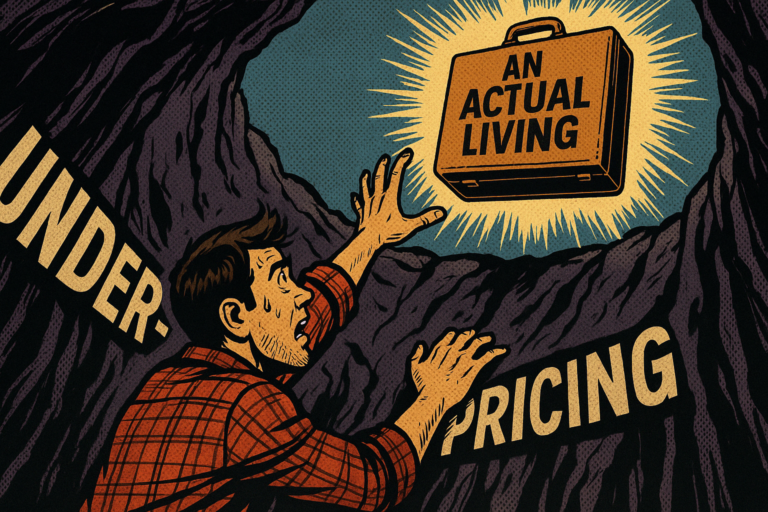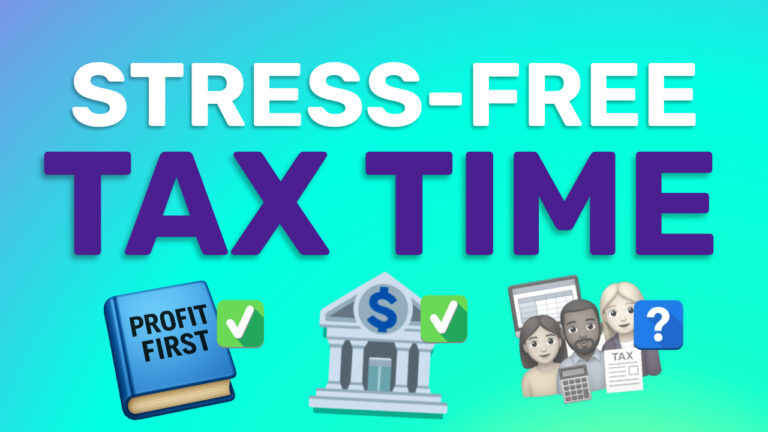As of the time this article was published, there is less than a month left to enroll in health insurance on the open exchange (Healthcare.gov, or your state’s alternative marketplace). The deadline for insurance that starts on January 1 had already passed, but if you sign up between December 16 and January 15, your plan will go into effect on February 1. After January 15, enrollment closes until next November. So don’t dawdle!
The Trouble with Health Insurance Subsidies for People with Variable Income
Now, as you shop around for insurance, it’s important to understand how subsidies work. Depending on your income level, you can get a tax credit that’s going to lower the amount that you have to pay each month for a health insurance plan. It’s a really nice benefit for those who qualify, but it’s actually for this reason why I’ve been hesitant to go shopping on the exchange – because I don’t know how much money I’m going to make at the end of the year.
My income is not fixed, it fluctuates.
I could hook a big client and bring in more income than I had expected. And if my income does exceed a certain threshold, I could end up losing all of my tax credit and have to pay back a chunk of change when it comes time to file my taxes. Who knew that making too much money would be a problem?
The “Subsidy Cliff” Explained
Now, to be fair, it’s not a problem yet. But I just don’t like not knowing what to expect. Especially when it comes to things like being able to go to the doctor. I’ve been scared of this thing called the “subsidy cliff.” As your income increases, the size of the premium tax credit you would receive decreases. Naturally. But for a while, there was a certain income level that triggered a sudden drop in your subsidy eligibility. Kinda like it… fell off a cliff.
As soon as you hit 400% of the federal poverty level, all financial assistance would vanish, and you’d be left holding the bag and need to pay full price for your health insurance plan. Depending on which plan you pick, that could cost anywhere between an arm and a leg and out the wazoo. If your household income was 399.99% of the federal poverty level, your insurance premium costs would be capped at 9.83% of your income. But if you made a few more dollars to add another 0.01 percent, no cap. That’s cap.
In one simulation I ran, a family making $85,300 in 2020 would be eligible for $5,000 in premium tax credits. But if someone in that family received a $200 bonus and their income got bumped up to $85,500, they’d have to pay full price for insurance. That “bonus” just dropped their net income (after health insurance premium expenses) from $77K down to $71.6K.
A New Hope for Health Insurance Affordability
But a couple of things have transpired recently that have made this a less risky proposition now for people like me.
First, there was a stimulus package passed a while ago called the American Rescue Plan. In short, that made more tax credits available for more people. So the subsidy “cliff” has been tapered off into a more gradual subsidy “off-ramp.” For a while, it looked like this subsidy expansion was going to expire at the end of this year. But this summer, Congress approved extending it through the end of 2025. So we have at least three more years of lower health care cost we can take advantage of.
The second thing that happened is – I learned a lot about how to control my taxable income. So even if my business ends up raking in a lot more cash than I expected, I can put that money into things like pretax retirement contributions, HSAs, or find other deductions that are going to lower the amount of money that shows up on my personal tax return.
How to Estimate Health Insurance Costs
Now, before we go any further, let’s figure out how much health insurance is going to cost in the first place. This is going to depend on a number of factors where you live, the size of your family, what sort of plan you want, and you can go straight to the insurance exchange and see the actual estimated cost of all the different plans. But the Kaiser Family Foundation has a great health insurance marketplace calculator that’s going to give you a good idea of how much you can expect to receive in subsidies based on your family size and income.
I plugged in some numbers. For my family of five, making $80,000 a year, I can expect to receive about $500 in premium tax credits each month, and I’d pay about $250/month for a “Silver” (mid-tier) health insurance plan.
Playing around with the calculator a bit more, I found at $100K, those numbers flip. I would receive $250 in credit and pay $500 each month. And financial assistance (for my household size in my particular zip code) dries up completely between $119K-120K.
Personally, I like the idea of $250 a lot more than paying $500 or $750+ each month, so let’s set $80,000 as our target income. To be clear, we can make more money. In fact, for the rest of this article we’re going to imagine I’ve had a banner year and ended up with $150,000 in revenue. That’s almost twice as much as my target and waaaay past the line for premium tax credit eligibility. So how to we handle the extra cash and avoid tripling our health insurance bill?
Controlling Your Taxable Income
Two power tools you can employ to control your taxable income are an S-Corp election and a Solo 401(k).
MEGA-DISCLAIMER: I am not a tax lawyer. I am not a professional accountant. This is not financial advice. I will do my best to explain everything to the best of my knowledge. If you are reading this and you are a tax or financial pro and I am misrepresenting something – PLEASE let me know! That said, here’s the gist of the tax benefits of an S-Corp election:
Tax Benefits of S-Corps
If you are a single-member LLC, electing to be taxed as an S-Corp essentially allows you to be both an employer and employee of your business. When your business makes money, you can pass that to yourself in two different ways. You can pay yourself as a W-2 employee, and you can also pay out a shareholder profit distribution. Now, the W-2 income is subject to a 15.3% payroll or FICA tax (Social Security and Medicare), in addition to federal income tax. The employer pays half of this (7.65%) and the employee pays half of this (7.65%).
Profit distributions are subject to federal income tax, but not subject to FICA tax. So any business income you draw as a distribution comes with a 15.3% bonus. And that is why S-Corp’s are boss.
Additional Benefits of S-Corps
Another benefit of an S-Corp election is it’s going to save you a lot of time.
At least it saved me a lot of time. Before I was an S-Corp, I was managing my own books. Even though it wasn’t my area of expertise, I thought I had a pretty good grasp on it. But once I moved into S-Corp Town, I knew I was out of my depth. There’s a lot of nitty gritty things you need to make sure you are doing correctly. So I called in the professionals.
I signed up with Formations, and they have taken care of everything from getting me initially set up as an S-Corp, managing my books, doing my business taxes, and saving me a lot of time and money in the process. I highly recommend you check them out. Sign up for a free consultation to see if they are a good fit for your business. And if you use my link, which I’ll post in the description below, you can get 2 months free and save an additional 10% every month. Just a little plug for a service that has really benefited my business.
Using a Solo 401(k) to Reduce your Taxes
Back to the exercise. Let’s say our business makes $150,000 next year. That is great, but that pushes us outside the eligibility for any financial assistant when it comes to health insurance. Even if we expense up to $30,000 and that knocks us down to $120K, we’re still not going to get any tax credits. But if we use our handy-dandy Solo 401(k), we can move a chunk of change out of our business and into our personal coffers without it counting against our taxable income.
You can defer 100% of your net self-employment income from your payroll, up to $22,500, and put that directly into your retirement account. To keep the math simple, let’s just sock away $20,000 and now we only have $100K that we have to account for now. That was an employee side deferral. As an employer you can contribute up to 25% of your salary to your Solo 401(k). The money still ultimately goes to you, but it skips your checking account and jumps straight into your retirement savings.
On the topic of salary, this is one of those nitty gritty things you have to deal with as an S-Corp. You can’t just pay all of your business income to yourself as a profit distribution and avoid all FICA tax. You need to pay yourself a “reasonable salary.” There’s a number of different ways you can calculate what a “reasonable” salary is for you (My friends at Formations would be happy to help you navigate this).
For now, let’s say we are paying ourselves 60% of our business income ($150K), which works out to be $90,000.
25% of that just happens to be another $22,500.
Subtract that from the remaining $100K in the business account, and that drops us below our $80,000 target!
We made a ton of money, filled up our retirement account, and protected our eligibility for affordable health insurance.
Final Thoughts
Health insurance is a very personal thing, a very variable thing. Your numbers are not going to be my numbers. It all depends on your income level, your health needs, your family size, and a whole menagerie of other factors. So do your own research, and do your own math. You can consult professional help to find a health plan that fits your situation.
I just wanted to demonstrate real quick that if you are self-employed and your income is all over the place, you don’t need to be scared. You don’t need to freak out. There are ways to control how much is going to show up on your tax return so you don’t get slapped with a massive tax bill at the end of the year.
And I was only using two different tools independently of each other! You can take the standard deduction, or if you’re making charitable contributions, there’s a number of other ways that you can lower your adjusted gross income(That’s what the IRS looks at when they calculate your eligibility for premium tax credits).
Again, I’m not a tax expert. I recommend talking to a real one so you can figure out the exact right moves for you. But I hope this was helpful; that it shined a little light and demystified this complicated topic and pointed you in the right direction to get some more information on how you can get covered, stay safe, and stay healthy, and save a lot of money!


